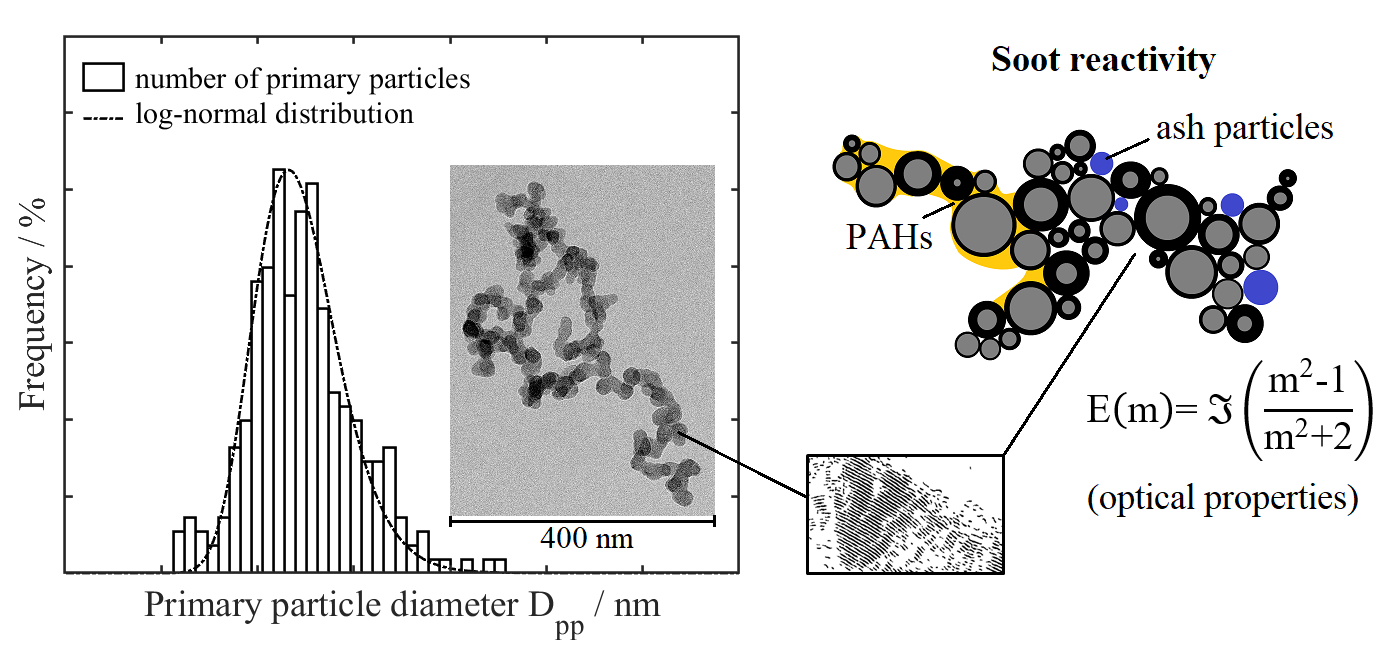Reactivity of particles from spark ignition engines: correlations between the particle structure, its optical properties and engine operating parameters
- Contact:
M.Sc. Fabian Hagen
- Project Group:
Prof.Dr.-Ing. D. Trimis
Reactivity of particles from spark ignition engines: correlations between the particle structure, its optical properties and engine operating parameters
In the course of European exhaust gas legislation, particulate emissions from gasoline engines with direct injection (DE) are a new core topic of engine development. Studies have shown that the mass-related emission limit value can generally be complied with using current engine technology. In contrast, compliance with the maximum permissible particle number concentration represents a major challenge. The reason for the strongly increased nanoscale particle emissions compared to the classic four-stroke gasoline engine with intake manifold injection is the incomplete homogenization of fuel. The result is locally sub-stoichiometric combustion zones which, due to incomplete combustion, favour particle formation. Nevertheless, the technology of gasoline direct injection is to be welcomed in principle, especially for reasons of efficiency and climate protection. However, it is important to reduce particulate emissions in such a way that they remain well below the European exhaust emission limit value and thus protect human health at the same time.
In order to comply with the limit values, the soot particles must therefore be converted with oxidative reactants. This takes place both in the engine cylinder and in the exhaust tract, and finally on the particulate filter. In each of these partial steps, which take place on different time scales and temperature levels, the soot particles undergo an oxidation reaction. The reactivity of soot particles that form at a specific operating point of the DE gasoline engine can be attributed to both their microstructural and nanostructural characteristics. From a large number of measurable particle characteristics, it is necessary to identify those that have a dominant influence on the reactivity behaviour. Subsequently, it is possible to derive particle property-reactivity relationships on the basis of which the reactivity of the particles can be controlled via engine operation.
Within this DFG funded research project, soot samples are taken from a DE research gasoline engine at different operating conditions to determine particle property-reactivity relationships. These will be analysed ex-situ with regard to their reactivity, structure and other properties.
A further aim is to reproduce the properties essential for the reactivity of the soot particles in synthetic model soot particles in order to minimise the effort of generating particles through lengthy and cost-intensive experiments on the engine test bench. In this context, various strategies are being pursued.
The third aim of the project is to detect the reactivity-relevant micro- and nanostructural particle properties in-situ using laser-optical measurement technology. The fast, non-contact, optical detection of reactivity-relevant particle properties offers the possibility to measure the reactivity of particles in small time scales without taking samples. The reactivity of particles is presumably determined by (a) their geometrical, microstructural properties and (b) the nanostructural structure, i.e. the order, orientation and extension of existing graphene layers. For the detection of these particle features, different laser-optical methods are combined. The validation of the measurement technique is carried out using model soot aerosols.
To achieve the goals, an interdisciplinary approach is necessary, which is ensured by three institutes - Institute for Piston Machinery (IFKM), Engler-Bunte Institute / Combustion Technology Division (EBI-VBT), Institute for Technical Chemistry and Polymer Chemistry (ITCP).


